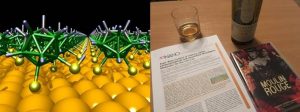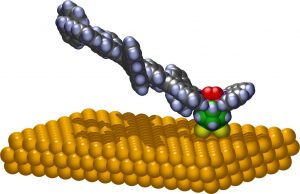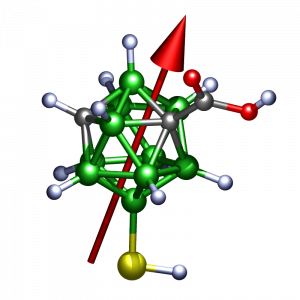Contact person: Tomáš Baše
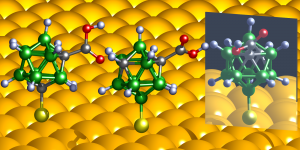
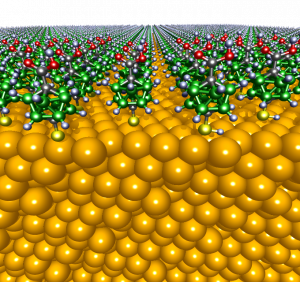
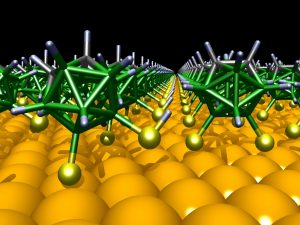
Boron clusters possess several advantages due to which they have received attention as useful building blocks for various self-assembled materials. Amongst other unique features they exhibit rigid and robust three-dimensional architectures, exist in plenty isomeric forms while keeping the overall geometry almost identical and represent an easily adjustable, man-made molecular system. We reported the first use of carborane molecules as constituents of monolayer-protected colloids and self-assembled monolayers in 2005 and started their systematic investigation aimed at both new types of materials and fundamental understanding of self-assembly principles. The SAMs of this new family of surface modifiers have been proven to show lower number and concentration of defects and higher thermal and chemical stability in comparison to the classical SAMs of organic thiols, which makes them superior precursors for stable interfaces towards electronic devices. To further develop on these recent and promising foundations we focus our interest on several key aspects such as opening the monolayers to further chemistries and interactions by their targeted functionalization, using them to design new types of SAMs in order to disentangle the complex forces and interactions that stand behind a particular structure and function, and to use them as a tool for understanding basic natural phenomena such as dipole-dipole interactions within self-organized materials.
References:
- Thomas J. C. et al. Acid-Base Control of Valency within Carboranedithiol Self-Assembled Monolayers: Molecules Do the Can-Can. ACS Nano 2018, 12, 2211-2221.
- Thomas J. C. et al. Self-Assembled p-Carborane Analog of p-Mercaptobenzoic Acid on Au{111}. Chem. Mater. 2015, 27, 5425-5435.
- Schwartz J. et al. Surface Dipole Control of Liquid Crystal Alignment. J.Am.Chem.Soc. 2016, 138, 5957-5967.
- Wang S. et al. Formation of Highly Ordered Terminal Alkyne Self-Assembled Monolayers on the Au{111} Surface through Substitution of 1-Decaboranethiolate. J. Phys. Chem. C 2019, 123, 1348-1353.
- Base T. et al. Carboranethiol-Modified Gold Surfaces. A Study and Comparison of Modified Cluster and Flat Surfaces. Langmuir 2005, 21, 7776-7785.
